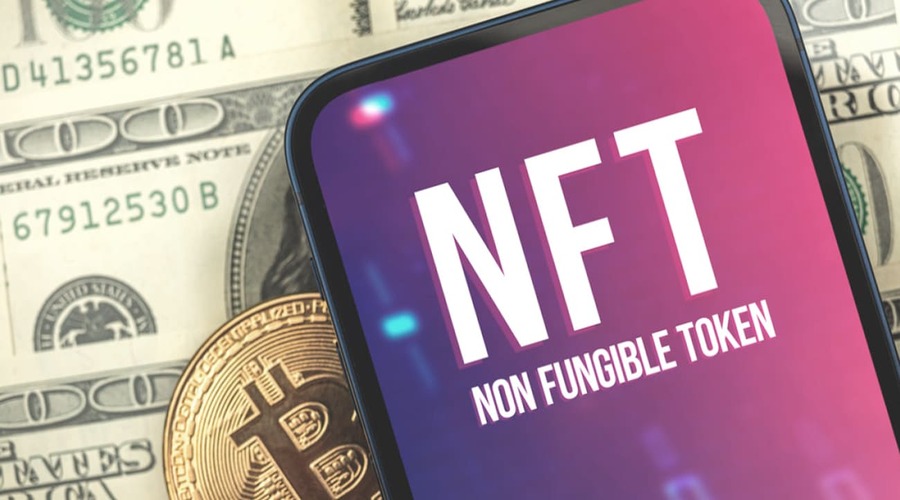Introduction
Wrapped Non-Fungible Tokens (NFTs) have emerged as a powerful solution to achieve interoperability within the NFT ecosystem. As the popularity of NFTs continues to rise, the need to bridge different blockchain networks and enable seamless transfer and interaction between NFTs becomes increasingly important. In this article, we will explore the concept of wrapped NFTs and their role in achieving interoperability, opening up new possibilities for creators, collectors, and investors.
Understanding Wrapped NFTs
What are Wrapped NFTs?
Wrapped NFTs are tokens that represent the ownership of an underlying NFT. These tokens are created on a different blockchain network than the one on which the original NFT exists. The process involves “wrapping” the original NFT by minting a corresponding token on a different blockchain that mirrors the properties and ownership rights of the original NFT. The wrapped token can then be freely traded, transferred, and interacted with on the new blockchain, bringing interoperability to the NFT space.
How do Wrapped NFTs Work?
The process of wrapping an NFT involves locking the original NFT in a smart contract on its native blockchain. This locked NFT then serves as collateral to mint an equivalent wrapped token on the target blockchain. The wrapped token is pegged to the value and ownership rights of the original NFT, allowing it to be seamlessly traded, utilized, and accessed across different blockchain networks.
Benefits of Wrapped NFTs
Wrapped NFTs offer several benefits in achieving interoperability:
- Cross-Chain Compatibility: Wrapped NFTs enable NFTs from one blockchain to operate and interact with other blockchain networks. This cross-chain compatibility opens up new avenues for creators, collectors, and investors to engage with a wider range of NFT marketplaces and ecosystems.
- Expanded Market Access: By wrapping NFTs, creators and collectors can tap into the user base of multiple blockchain networks. This expanded market access allows for increased exposure, audience reach, and potential liquidity for NFTs.
- Enhanced Liquidity: Wrapped NFTs enhance liquidity by enabling NFTs to be traded on various decentralized exchanges (DEXs) and platforms across different blockchains. This increased liquidity fosters a more vibrant and interconnected NFT ecosystem.
- Reduced Fragmentation: The interoperability provided by wrapped NFTs reduces the fragmentation of the NFT space. It allows for the seamless transfer and interaction of NFTs across different platforms, eliminating the need for separate marketplaces and facilitating a more cohesive experience for NFT creators and collectors.
Achieving Interoperability with Wrapped NFTs

Wrapping Protocols and Platforms
Several protocols and platforms facilitate the wrapping of NFTs. Some popular examples include:
- WETH (Wrapped Ether): WETH is a widely-used wrapped token that represents Ether on the Ethereum blockchain. By wrapping Ether, it becomes compatible with ERC-20 standards, allowing for seamless integration with decentralized finance (DeFi) protocols and exchanges.
- WERC-20 (Wrapped ERC-20): WERC-20 is a standard for wrapping ERC-20 tokens, which are fungible tokens on the Ethereum blockchain. By wrapping ERC-20 tokens, they can be utilized on other blockchains, expanding their utility and interoperability.
- Wrapped Bitcoin (WBTC): WBTC is a wrapped token that represents Bitcoin on the Ethereum blockchain. It brings Bitcoin’s liquidity and value to the Ethereum ecosystem, allowing Bitcoin holders to access decentralized applications (dApps) and decentralized exchanges (DEXs) on Ethereum.
Use Cases for Wrapped NFTs
Wrapped NFTs have various use cases that demonstrate the value of interoperability:
- Cross-Platform Trading: Wrapped NFTs enable collectors to trade their NFTs on different platforms without the need for complex and time-consuming migration processes. This seamless cross-platform trading enhances user experience and accessibility.
- Liquidity Provision: Wrapped NFTs can be used as collateral in decentralized finance (DeFi) platforms, unlocking liquidity for NFT holders. This enables NFT owners to access additional funds while still maintaining ownership of their NFTs.
- Cross-Chain Gaming: Wrapped NFTs can be utilized in cross-chain gaming, allowing players to use their NFTs across multiple gaming platforms and blockchain networks. This interoperability enhances the gaming experience and offers new possibilities for in-game asset ownership and utilization.
- Interconnected Marketplaces: Wrapped NFTs facilitate the connection between different NFT marketplaces, enabling collectors to explore a wider range of artworks, digital collectibles, and assets. This interconnectedness creates a more diverse and vibrant NFT marketplace ecosystem.
The Role of Custodians in Wrapped NFTs
Wrapped NFTs often involve the role of custodians, entities that hold the original NFT and issue the corresponding wrapped tokens. Here’s an exploration of the role of custodians in the wrapped NFT ecosystem:
- Security and Trust: Custodians play a crucial role in ensuring the security and trustworthiness of wrapped NFTs. They are responsible for securely storing the original NFTs and issuing wrapped tokens on other blockchain networks. Custodians employ robust security measures to safeguard the assets and maintain the integrity of the wrapping process.
- Verification and Compliance: Custodians verify the authenticity and ownership of the original NFTs before issuing wrapped tokens. This verification process helps maintain the credibility and legitimacy of the wrapped NFTs. Additionally, custodians ensure compliance with any legal or regulatory requirements related to the wrapping and trading of NFTs.
- Redemption and Unwrapping: In the event that an owner wishes to unwrap their wrapped NFT and retrieve the original NFT, custodians facilitate the redemption process. They ensure a seamless and secure unwrapping experience for the owners, allowing them to access the underlying NFT and transfer it back to its native blockchain.
Interoperability Challenges and Considerations
While wrapped NFTs provide a solution for achieving interoperability, certain challenges and considerations should be taken into account:
- Technical Compatibility: Interoperability between different blockchain networks requires technical compatibility. Each blockchain may have unique features, functionalities, and smart contract standards. Ensuring compatibility and smooth interactions between these networks can be a complex task that requires thorough development and testing.
- Fragmented Ecosystem: The NFT ecosystem consists of multiple platforms, each with its own standards and protocols. Achieving full interoperability requires collaboration and standardization efforts among these platforms to create a unified and interconnected ecosystem for wrapped NFTs.
- Security and Trust: As wrapped NFTs involve multiple parties, including custodians, there is a need to establish trust and security in the wrapping and unwrapping processes. Ensuring the integrity of custodial services, secure storage of original NFTs, and transparent processes for token issuance and redemption are critical for maintaining trust in the wrapped NFT ecosystem.
- Legal and Regulatory Compliance: The cross-chain nature of wrapped NFTs may involve legal and regulatory considerations. Different jurisdictions have varying regulations regarding NFTs, digital assets, and securities. Complying with these regulations, such as Know Your Customer (KYC) and Anti-Money Laundering (AML) requirements, is essential for maintaining legal compliance in the wrapped NFT space.
The Future of Wrapped NFTs and Interoperability
The future of wrapped NFTs and interoperability holds immense potential. Here are some developments and trends to watch for:
- Expansion of Wrapping Protocols: As the demand for wrapped NFTs grows, we can expect to see the development of additional wrapping protocols and standards. These protocols will enable the wrapping of NFTs from different blockchain networks, further enhancing interoperability and expanding the possibilities for cross-chain interactions.
- Integration with Decentralized Exchanges: Wrapped NFTs are likely to integrate more seamlessly with decentralized exchanges (DEXs) across different blockchains. This integration will provide enhanced liquidity and trading opportunities for wrapped NFTs, further driving the adoption and value of interoperable NFTs.
- Emergence of NFT Bridges: NFT bridges, also known as cross-chain bridges, will become increasingly important in facilitating the transfer of wrapped NFTs between blockchain networks. These bridges will provide efficient and secure mechanisms for users to move their wrapped NFTs across different blockchains, contributing to a more interconnected NFT ecosystem.
- Standardization and Collaboration: To achieve broader interoperability, standardization and collaboration among NFT platforms, developers, and custodians will be crucial. Efforts to establish common protocols, cross-chain compatibility, and shared standards will create a more cohesive and user-friendly experience for wrapped NFTs.
Use Cases for Wrapped NFTs
Wrapped NFTs have diverse applications within the NFT ecosystem. Let’s explore some notable use cases:
- Cross-Platform Marketplaces: Wrapped NFTs enable seamless trading and interaction across different NFT marketplaces. Collectors can list their wrapped NFTs on multiple platforms, reaching a wider audience and maximizing their opportunities for buying, selling, and trading.
- DeFi Integration: Wrapped NFTs can be integrated into decentralized finance (DeFi) platforms, unlocking liquidity and enabling NFT holders to leverage their assets. Users can collateralize their wrapped NFTs to borrow funds, earn yield through staking, or participate in liquidity pools, expanding the utility and value of their NFT holdings.
- Virtual Worlds and Metaverses: Wrapped NFTs play a vital role in virtual worlds and metaverse environments. They allow users to bring their NFT assets from one virtual world to another, ensuring interoperability and seamless experiences across different metaverse platforms.
- Cross-Chain Gaming: Wrapped NFTs enable cross-chain gaming experiences, where players can use their NFTs across multiple gaming platforms and ecosystems. This interoperability enhances gameplay and ownership experiences, allowing for the transfer and utilization of in-game assets across different games and blockchains.
Conclusion
Wrapped NFTs play a vital role in achieving interoperability within the NFT ecosystem. By allowing NFTs to be wrapped and traded across different blockchain networks, wrapped NFTs enhance liquidity, expand market access, and foster a more cohesive NFT marketplace. As the wrapped NFT space continues to evolve, addressing challenges, enhancing security measures, and promoting standardization will pave the way for a future where NFTs can seamlessly interact and thrive across multiple blockchain networks.

